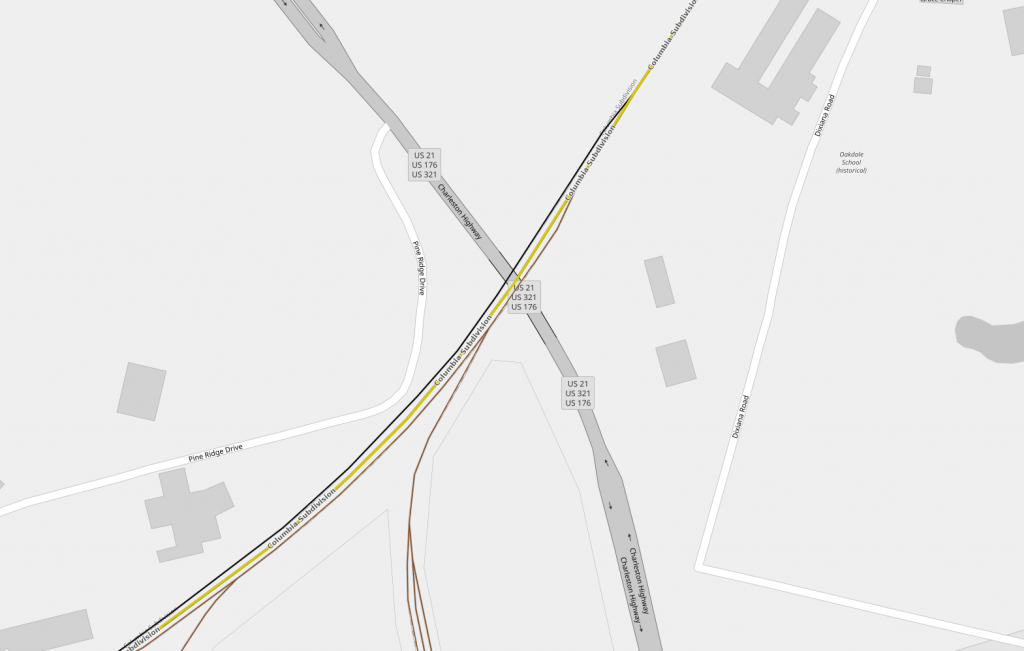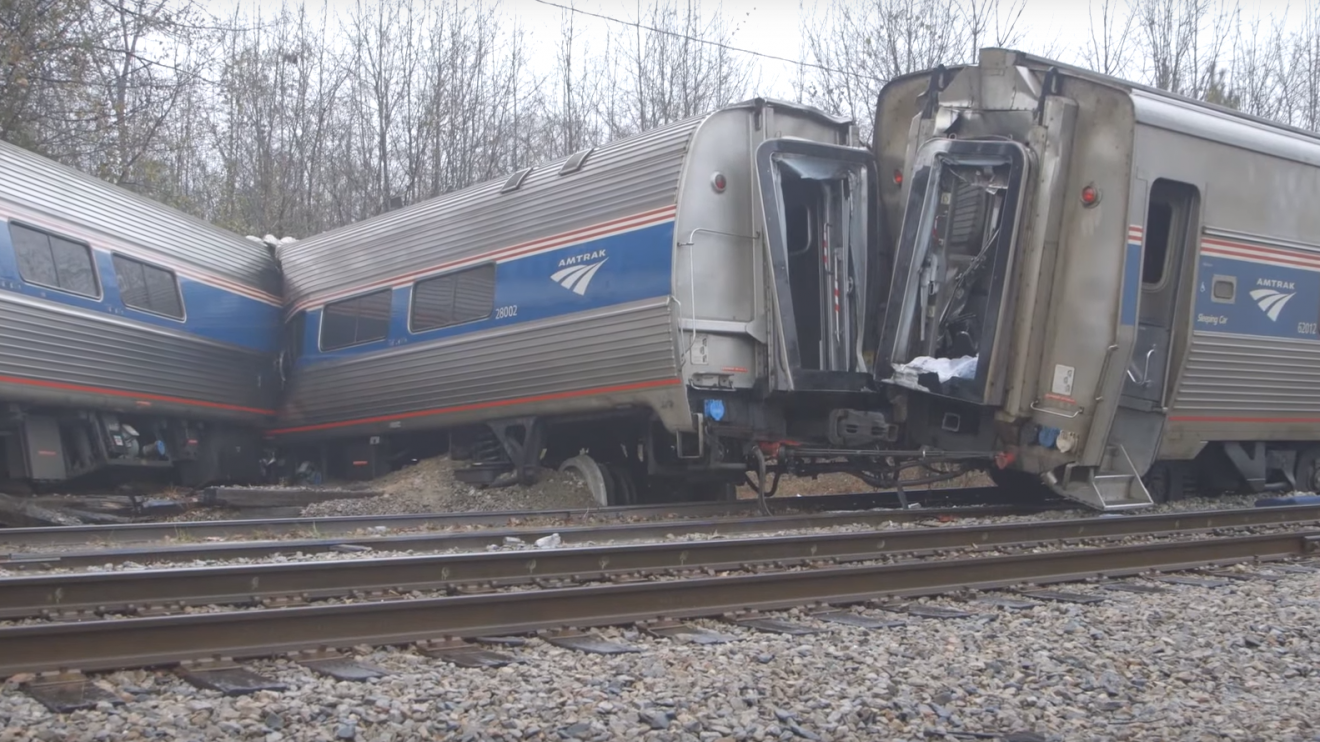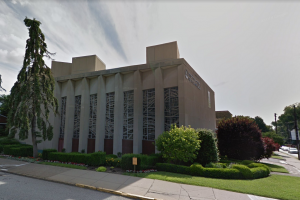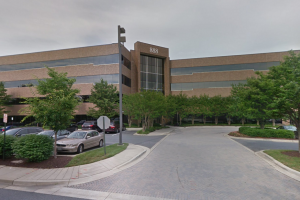At approximately 2:35 a.m. on Sunday February 4, southbound Amtrak passenger train 91 from New York heading to Miami was misrouted by a padlocked track switch onto a parallel track where a parked CSX freight train was sitting, causing the two trains to collide and killing the Amtrak engineer and conductor and injuring 116 passengers. There are still many details to learn, but an image of what may have happened is starting to emerge.
Two Amtrak employees killed when train collides with a CSX freight train
What we know
The Amtrak train was train 91 on the Silver Star route which runs between New York and Miami. The train changed off locomotives in Washington, D.C. in preparation to switch from overhead electric power to diesel power and continued south.

After departing Washington Union Station, Amtrak trains run on “host” railroad territory. That is, Amtrak does not own the tracks south of D.C, but instead pays to use tracks owned by other railroads. Between D.C. and West Palm Beach, Florida, Amtrak runs primarily on track owned by CSX, one of the major American railroads.
The Amtrak/CSX crash occurred in Cayce, South Carolina, and was within the CSX Columbia Subdivision, south of Columbia. At this location in the CSX network there is a single main track which runs through the area and several “sidings” which are short one- or two-mile-long parallel tracks on which trains can be parked.
In this particular location shown in the image below, there is a set of three parallel north/south tracks which merge into the main track. They are used for loading and unloading cars either before or after being transported by train. According to National Transportation Safety Board Chairman Robert Sumwalt, the CSX train (shown in black) which was parked on the north-most track, originally unloaded four rail cars of vehicles utilizing one of the three parallel tracks (shown in brown). The train was moved forward onto the yellow main line track, and then backed into the black siding track.
Trains are routed into and off of these short “siding” tracks by switches, which control the direction of train movement. Switches are common throughout all railroad networks and can be used to route one train around another, change which track a train travels on, or allow a train access to a siding track.
During manual switch movements – when the position of the switch is controlled by hand instead of by an automated train routing system – crews are sometimes required to secure the switch in a particular position to ensure that it doesn’t move when a train passes overtop. The switch which routed the Amtrak train on Sunday from the main track onto the occupied siding was ‘lined and locked’ in the diverging position, causing the collision.
In order for the CSX autorack train to be backed into the black siding after unloading vehicles at the southern facility, the switch to the siding would have been locked – with a physical padlock – in the diverging position. This protocol is standard at switches which are not centrally controlled by an electronic system.
The NTSB’s Sumwalt confirmed at a Sunday afternoon press briefing that the switch on the north side of the siding was still locked in the diverging position after the CSX train was backed in; it had not been removed after the train movement.
A memo sent by Amtrak CEO Richard Anderson and obtained by Reuters states that Amtrak train 91 was “was cleared to proceed by CSX dispatch,” even though the siding switch was aligned in the wrong position. This caused the Amtrak train to “take” the switch onto the siding and to collide with the CSX train which was already there.

What we need to confirm and find out
One of the most curious reports to come out of the incident is from the Jacksonville Business Journal, which reported that CSX signal maintainers had been working in the area of the collision. During the signal work, the JBJ says, the signaling system may have been turned off. Without the signaling system in use, it is possible that the CSX dispatcher and the Amtrak train engineer were not notified that the siding switch was in the wrong position. Without this notification, the Amtrak train would have proceeded south after departing the Columbia Amtrak station and accelerated to a maximum speed of 59 miles per hour.
Sumwalt said at Sunday’s briefing that the NTSB was aware of media reports that the signaling system was disabled at the time of the crash, but could not confirm it. The state of the system will be important to the NTSB investigation: CSX and all major railroading companies have procedures which trains and dispatchers are required to follow in order to ensure safe train separation if the signaling system is disabled.
If those procedures were not followed, then human error could have been a contributor to the crash.
We also need to know why the siding switch was still locked in the diverging position. After the CSX train was parked in the siding, the crew would have been responsible for unlocking the switch and returning it to the straight-through position. Knowing what the crew was thinking at the time – did they think they already reset the switch? Did they forget about it? – will help to inform the investigation.
The CSX dispatcher’s actions also need to be known to provide a full picture of what happened. The CSX crew that padlocked the siding switch would more than likely have been required to report to the dispatcher their actions and that they were locking the switch; they would have been required to do the same when unlocking and moving the switch back to the straight-through position. Both of these actions should have been done before the Amtrak train went through the area, but the latter obviously was not.
Understanding why these incidents happen is one of the core tenants of the NTSB’s mission. While the NTSB itself is not a regulatory agency, they aim to develop recommendations to prevent these kinds of incidents from happening again.
Would Positive Train Control have prevented the crash?
Positive Train Control is an “overlay” signaling system which works on top of the signaling system that a railroad might already have in place. If a signaling system requires a train to slow down, PTC will enforce the speed limit instead of relying on the train engineer. If PTC detects a train nearby, it can force trains to slow down to prevent a collision, even if the train engineer doesn’t. It would be like a car automatically braking at a red light without the driver’s input.
PTC has been one of the NTSB’s “most wanted” safety control systems for a number of years, and the agency has been recommending the implementation of PTC-like systems, for over 45 years. In 2008 Congress passed a mandate for all railroads to implement PTC with a deadline of 2015. However, that deadline was extended in October 2015 to the end of this year, and railroad companies can still apply for waivers to delay implementing the system until 2020.
PTC would most likely have prevented the Amtrak/CSX collision. However, if the underlying signal system actually was temporarily disabled for trackwork, then the possibility that even PTC wouldn’t have prevented the collision is still on the table. It will be up to the NTSB and their thorough investigation teams to determine everything that happened, why it happened, and how to prevent it from happening again in the future.







